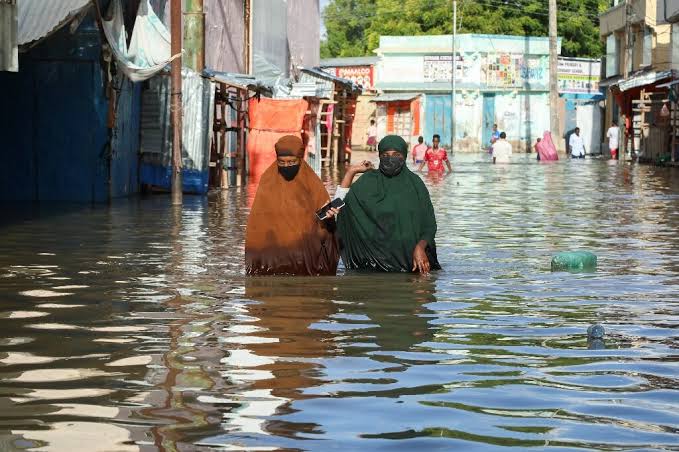After heavy rains inundated towns across East Africa, Somalia faced its worst flooding in decades, resulting in 29 fatalities and displacing over 300,000 residents. This catastrophe follows a severe drought in the region, compounding the challenges for authorities tasked with rescuing those stranded by floodwaters.
Somalia’s National Disaster Management Agency (SoDMA) stated on Wednesday that this event is the most severe in “decades.”
“What is going on today is the worst for decades,” said Hassan Isse, managing director of SoDMA.
Somalia is already grappling with the aftermath of a historic drought that devastated its agriculture and claimed up to 43,000 lives last year. Somali authorities are now engaged in the search and rescue of potentially thousands of individuals stranded by the floodwaters. The situation is dire, with the United Nations issuing a warning that at least 2,400 people in Luuq town are isolated due to the overflowing of the Jubba River.
The flooding has had repercussions in neighboring countries Kenya and Ethiopia. In Kenya, heavy rainfall during the weekend resulted in the tragic loss of at least 15 lives and the destruction of 97 hectares (240 acres) of farmland, along with over 1,000 livestock animals, as reported by the Kenya Red Cross Society on Sunday.
Additionally, in the Somali region of Ethiopia, thousands have been displaced due to the ongoing flooding.
Scientists emphasize that climate change is driving more frequent and severe extreme weather events, with the Horn of Africa being particularly susceptible.
Christophe Hodder, a climate security advisor at the United Nations Environment Programme, warns, “This cycle of flooding and drought is going to continue, and we will witness more of these events unless we take global-scale action.”

Leave a Reply